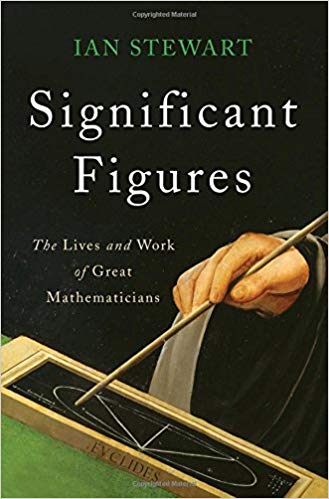
Significant Figures: The Lives and Work of Great Mathematicians
Tom Verde
Ian Stewart
2017, Basic Books, 978-0-46509613-8, $16.99 hb.
This book will fascinate readers with even a passing interest in mathematics. Among the “top 25” mathematical pioneers profiled, Muhammad ibn Musa al-Khwarizmi (c. 780–c. 850) will stand out. “[W]hat is easiest and most useful in arithmetic” for resolving legal, commercial and engineering difficulties, al-Khwarizmi pondered in his landmark al-Kitab al-mukhtaser fi hisab al-jabr wa-l-muqabala (The Compendious Book on Calculation by Completion and Balancing), written around 830. His answer, identified in the title, was al-jabr, “completion,” later Anglicized to “algebra,” a method he devised to find unknown quantities in what are now familiar, x-and-y equations. And while he was at it, he “almost singlehandedly” introduced medieval Europe to “Hindu numerals”—including the hitherto unknown zero—which ultimately led to “Algoritmi” or algorithms, a term derived from his Westernized name (Algorismi).
You may also be interested in...

Historic Mosques in Sub-Saharan Africa
From Mali to Tanzania, historian Stéphane Pradines traces a thousand years of Islamic architecture that forces us to rethink what we know about Africa’s past.
A Fresh Perspective on Senegal’s Photographic History
Author Giulia Paoletti’s Portrait and Place puts historical Senegalese photography in a fresh global context.